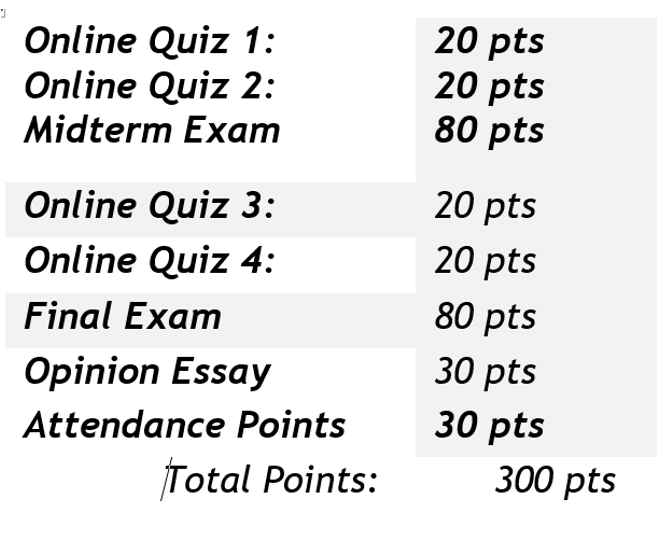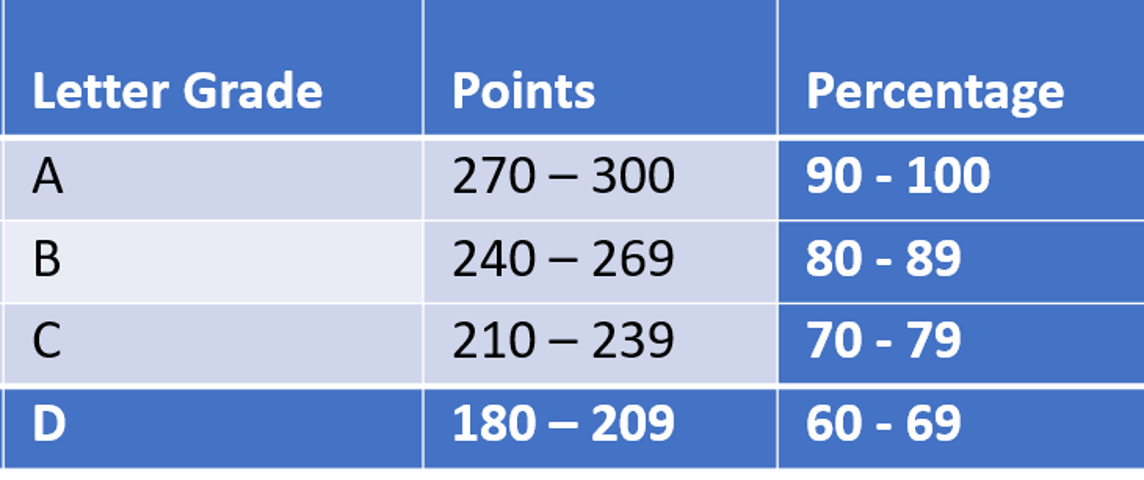Biology of Human Pregnancy Spring 2019 Syllabus
SYLLABUS BIO 3070 Fall 2019
Course Information:
BIO 3070 - Biology of Human Pregnancy
Days: Mondays and Wednesdays
Time: 5:30PM - 6:45PM
Place: Building 8 Room 4
Required Text:
Essentials of Maternity, Newborn, and Women's Health Nursing
Third Edition ISBN: 978-1-60831-801-8
Publisher: Wolters Kluwer Health | Lippincott Williams & Wilkins, Philadelphia, 2013
Instructor Information:
Faculty name: Professor Cynthia Anderson Sanchez Faculty contact information:
Email: cmanderson@cpp.edu Office Location: 94-278
Office Hours: Mondays and Wednesdays 5:45pm – 6:45pm
Virtual Office Hours (for online students): MWF 12pm-1pm
Course Description:
This course presents concepts of women’s health during childbearing years, antepartum, intrapartum, postpartum, and the health of newborns. Students will explore the concepts of health promotion, disease prevention, and alterations in health related to women in these phases and the newborn infant. Emphasis is on whole-person care and will include concepts from a variety of culturally diverse settings.
Course Objectives:
•&νβσπ;&νβσπ;&νβσπ;&νβσπ;&νβσπ;&νβσπ;&νβσπ;&νβσπ; Upon completion of this course, students will be able to:
•&νβσπ;&νβσπ;&νβσπ;&νβσπ;&νβσπ;&νβσπ;&νβσπ;&νβσπ; Demonstrate an understanding of the physical, psychosocial and developmental aspects of maternity.
•&νβσπ;&νβσπ;&νβσπ;&νβσπ;&νβσπ;&νβσπ;&νβσπ;&νβσπ; Discuss the overall aspects of maternal health during antepartum, intrapartum, postpartum, and newborn care.
•&νβσπ;&νβσπ;&νβσπ;&νβσπ;&νβσπ;&νβσπ;&νβσπ;&νβσπ; Understand appropriate communication techniques for pregnant women, new mothers and newborns with diverse psychosocial, physical, and cultural backgrounds in a variety of settings.
•&νβσπ;&νβσπ;&νβσπ;&νβσπ;&νβσπ;&νβσπ;&νβσπ;&νβσπ; Evaluate possible legal/ethical issues in the areas of maternal–newborn nursing.
•&νβσπ;&νβσπ;&νβσπ;&νβσπ;&νβσπ;&νβσπ;&νβσπ;&νβσπ; Understand cultural/social/economical and political influences that can impact health and care provided to the maternal–newborn client.
Course Policies
Attendance Policy:
Attendance will be taken at randomly during the Semester and will be worth a total of 30 points toward your overall grade.
Grading Scale: You will be graded according to the following standard scale, in percent: A=90-100, B=80-89, C=70-79, D=60-69, and F=0-59. The point breakdown for the course will be as follows:
Exams and Quizzes: This course will consist
one in-class midterm worth 80 points, and one in-class final exam worth 80 points.
The 1st and 2nd online quizzes will take place during the first half of the course and will take place before the midterm. The midterm will be based on the material covered in the first half of the course and will consist of similar questions as those that will be presented in the 1st and 2nd online quizzes. You should review the answers to your online quizzes to serve as a study guide in preparation for the in-class midterm.
Similarly, the 3rd and 4th online quizzes will take place during the last half of the course and will take place after the midterm and before the final exam. The final exam is non- cumulative and will be based on the material covered in the last half of the course. The final exam will consist of similar questions as those that will be presented in the 3rd and 4th online quizzes. You should review the answers to your online quizzes to serve as a study guide in preparation for the in-class final exam.
Examination Policy: Online quizzes will be available no less that 2 weeks before their due date. Given the ample time you will have to complete online quizzes, late quizzes will NOT be accepted without a written doctor’s excuse that covers the entire 2-week period. Midterm and Final Exam cannot be made up without a written doctor’s note or other variable emergency.
Opinion Essay: Students will write a 3-5 page essay on any topic of their choice presented in the textbook. The essay should be between 750 and 2000 words. Essays are due no later than Friday May 10th, and must be printed and handed in during class for full credit.
Expectations of Students:
Students are expected to exhibit maturity, tolerance and mutual respect. There will be open and honest discussions on several topics that will require a level of maturity, respect, cultural sensitivity and tolerance. Images of genitalia, labor and delivery may be shown for the purposes of sexual education and reproductive education.
Course Schedule
CLASS WILL NOT MEET ON:
Labor Day: MONDAY September 2
Veteran's Day: MONDAY November 11
Thanksgiving: WEDNESDAY November 27 (day before Thanksgiving Break)
Week 1
8/26-9/01
History and Evolution of Maternity in the United States
Chapter 1: Perspectives on Maternal, Newborn, and Women’s Health Care – read pgs 1 - 8
none
Week 2
9/2-9/08
NO CLASS
Labor Day: MONDAY September 2
Mortality and Health Issues
Chapter 1: Perspectives on Maternal, Newborn, and Women’s Health Care - read pgs 8 - 26
None
Week 3
9/9-9/15
Barriers to Health Care and Other Issues
Chapter 1: Perspectives on Maternal, Newborn, and Women’s Health Care - read pgs 26 - 29
Online Quiz 1 Due by Sunday 9/15
Week 4
9/16-9/22
The Female Reproductive Anatomy
Chapter 3: Anatomy and Physiology of the Reproductive System – read pgs 68 - 72
None
Week 5
9/23-9/29
The Reproductive Cycle, Menstrual Disorders Chapter
Chapter 3: Anatomy and Physiology of the Reproductive System – read pgs 73 – 78
Chapter 4: Common Reproductive Issues - Read pgs 85 – 95 and pgs 130 – 136
none
Week 6
9/30-10/6
The Male Reproductive Anatomy
Chapter 3: Anatomy and Physiology of the Reproductive System – read pgs 78 - 80
Online Quiz 2 Due by
Sunday 10/06
Week 7
10/7-10/13
Infertility and Contraception
Chapter 4: Common Reproductive Issues - Read pgs 98 - 125
none
Week 8
10/14-10/20
Fetal Development
Chapter 10: Fetal Development and Genetics
Midterm Exam – Monday 3/11
Week 9
10/21-10/27
Signs and Symptoms of Pregnancy
Chapter 11: Maternal Adaptation During Pregnancy – read pgs 333 – 335
None
Week 10
10/28-11/2
The Pregnant Body
Chapter 11: Maternal Adaptation During Pregnancy – read pgs 335 – 337 and 354 - 357
None
WEEK 11
SPRING AK
11/4-11/9
The Pregnant Body
Chapter 11: Maternal Adaptation During Pregnancy – read pgs 335 – 337 and 354 - 357
Online Quiz 3 Due by Sunday 11/09
Week 12
11/11-11/17
NO CLASS
Veteran's Day: MONDAY November 11
Eating for 2
Chapter 11: Maternal Adaptation During Pregnancy – read pgs 333 – 335
None
Week 13
11/18-11/23
Discomforts of Pregnancy
Chapter 12: Nursing Management During Pregnancy – read pgs 387 - 394
None
Week 14
11/25-11/30
Thanksgiving: NO CLASS WEDNESDAY November 27 (day before Thanksgiving Break)
Signs of Labor and Delivery
Chapter 13: Labor and Birth – read pgs 422 - 444
Online Quiz 4 Due by Sunday 11/30
Week 15
12/2-12/7
Physical and Emotional Postpardum Changes
Chapter 15: Postpartum Adaptations – read pgs 502 - 515
Complete Printed Essay Due On or Before 12/14
FINALS WEEK
12/9-12/14
TBD
TBD
TBD
Course Information:
BIO 3070 section 01 – CRN (34225)
Biology of Human Pregnancy
Days: Mondays, Wednesdays and Fridays
Time: 8:00AM - 8:50AM
Place: 24A 1407
Spring Semester Dates: Jan 19, 2019 - May 10, 2019
Required Text:
Essentials of Maternity, Newborn, and Women's Health NursingThird Edition ISBN: 978-1-60831-801-8Publisher: Wolters Kluwer Health | Lippincott Williams & Wilkins, Philadelphia, 2013
Instructor Information:Faculty name: Professor Cynthia Anderson Sanchez
Faculty contact information:
Email: cmanderson@cpp.edu
Office Location: 94-278
Office Hours: Mondays and Wednesdays 9am – 10am
Course Description:
This course presents concepts of women’s health during childbearing years, antepartum, intrapartum, postpartum, and the health of newborns. Students will explore the concepts of health promotion, disease prevention, and alterations in health related to women in these phases and the newborn infant. Emphasis is on whole-person care and will include concepts from a variety of culturally diverse settings.
Course Objectives:
Upon completion of this course, students will be able to:
- Demonstrate an understanding of the physical, psychosocial and developmental aspects of maternity.
- Discuss the overall aspects of maternal health during antepartum, intrapartum, postpartum, and newborn care.
- Understand appropriate communication techniques for pregnant women, new mothers and newborns with diverse psychosocial, physical, and cultural backgrounds in a variety of settings.
- Evaluate possible legal/ethical issues in the areas of maternal–newborn nursing.
- Understand cultural/social/economical and political influences that can impact health and care provided to the maternal–newborn client.
Course Policies
Attendance Policy:
Attendance will be taken at randomly during the Semester and will be worth a total of 30 points toward your overall grade.
Grading Scale: You will be graded according to the following standard scale, in percent: A=90-100, B=80-89, C=70-79, D=60-69, and F=0-59. The point breakdown for the course will be as follows:
Online Quiz 1: 20 pts
Online Quiz 2: 20 pts
Midterm Exam 80 pts
Online Quiz 3: 20 pts
Online Quiz 4: 20 pts
Final Exam 80 pts
Opinion Essay 30 pts
Attendance Points 30 pts
Total Points: 300 pts
Exams and Quizzes: This course will consist of 4 online quizzes worth 20 points each, one in-class midterm worth 80 points, and one in-class final exam worth 80 points.
The 1st and 2nd online quizzes will take place during the first half of the course and will take place before the midterm. The midterm will be based on the material covered in the first half of the course and will consist of similar questions as those that will be presented in the 1st and 2nd onlne quizzes. You should review the answers to your online quizzes to serve as a study guide in preparation for the in-class midterm.
Similarly, the 3rd and 4th online quizzes will take place during the last half of the course and will take place after the midterm and before the final exam. The final exam is non-cumulative and will be based on the material covered in the last half of the course. The final exam will consist of similar questions as those that will be presented in the 3rd and 4th onlne quizzes. You should review the answers to your online quizzes to serve as a study guide in preparation for the in-class final exam.
Examination Policy: Online quizzes will be available no less that 2 weeks before their due date. Given the ample time you will have to complete online quizzes, late quizzes will NOT be accepted without a written doctor’s excuse that covers the entire 2-week period. Midterm and Final Exam cannot be made up without a written doctor’s note or other varifyable emergency.
Opinion Essay: Students will write a 3-5 page essay on any topic of their choice presemted in the texbook. The essay should be between 750 and 2000 words. Essays are due no later than Friday May 10th, and must be printed and handed in during class for full credit.
Expectations of Students:
Students are expected to exhibit maturity, tolerance and mutual respect. There will be open and honest discussions on several topics that will require a level of maturity, respect, cultural sensitivity and tolerance. Images of genitalia, labor and delivery may be shown for the purposes of sexual education and reproductive education.
Important Dates:
Finals week: May 11 – 17
Add Period: January 14 - February 4
Last day to drop and receive 100% refund: January 21
Last Day to Drop Period without a ‘W’: February 4
Last day to drop and receive a pro-rated refund: March 31
Last day to drop and receive a "W": February 18
Holidays:
NO CLASS / CAMPUS CLOSED
Martin Luther King, Jr's Birthday – January 21
Spring Break (Instruction) - March 30 - April 5
Memorial Day - May 27


